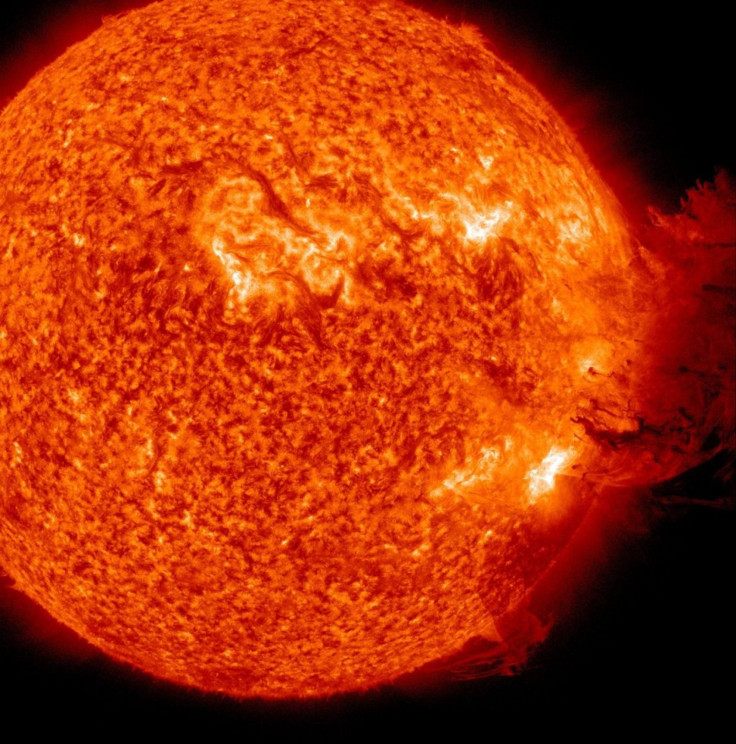Solar Flare 2011: May Be Coming Tonight To Earth

It won't be the end of earth, but rather provide our planet a glancing blow.
NASA announced yesterday the Sun unleashed an M-2 (medium-sized) solar flare, an S1-class (minor) radiation storm and a spectacular coronal mass ejection (CME). According to NASA, articles mushroomed up and fell back down covering an area of almost half the solar surface.
The end result, according to NASA models, is the CME is moving to Earth at a rate of at 1400 km/s. By late night June 8 or early June 9, the CME will deliver a glancing blow to Earth's magnetic field. This in turn may provide night sky watchers with auroras, which is when a collision of charged particles directed at the Earth's magnetic field causes a fascinating light display in the night sky.
A solar flare is caused when intense burst of radiation comes from the release of magnetic energy associated with sunspots. Flares are the solar system's largest explosive events. A CME happens when the outer solar magnetic fields are closed, often above sunspot groups, and the confined solar atmosphere can suddenly and violently release bubbles of gas and magnetic fields.
Solar flares and CME can impact the earth when they are facing the planet. Clouds emanating from a CME can erupt in any direction, and then continue on in that direction, plowing right through the solar wind. In this case, the Solar Flare and CME were aimed at the Earth, but not directly enough to tremendously impact the planet.
As a result of the CME, a cloud of charged particles will pass by the Earth and may even affect satellite and communication systems. However, NASA scientists say if there's an impact, it won't be noticeable. In addition, aurora borealis may occur as a result of the CME. It depends on how the Earth's magnetic field is oriented at the time of impact.
The National Oceanic and Atmospheric Administration say there is a 25 percent chance of auroras. For people in high latitudes, such as Antarctica, there is an even greater chance.
Check out the video of the Solar Flare below courtesy of The Sun Today organization.
© Copyright IBTimes 2024. All rights reserved.











